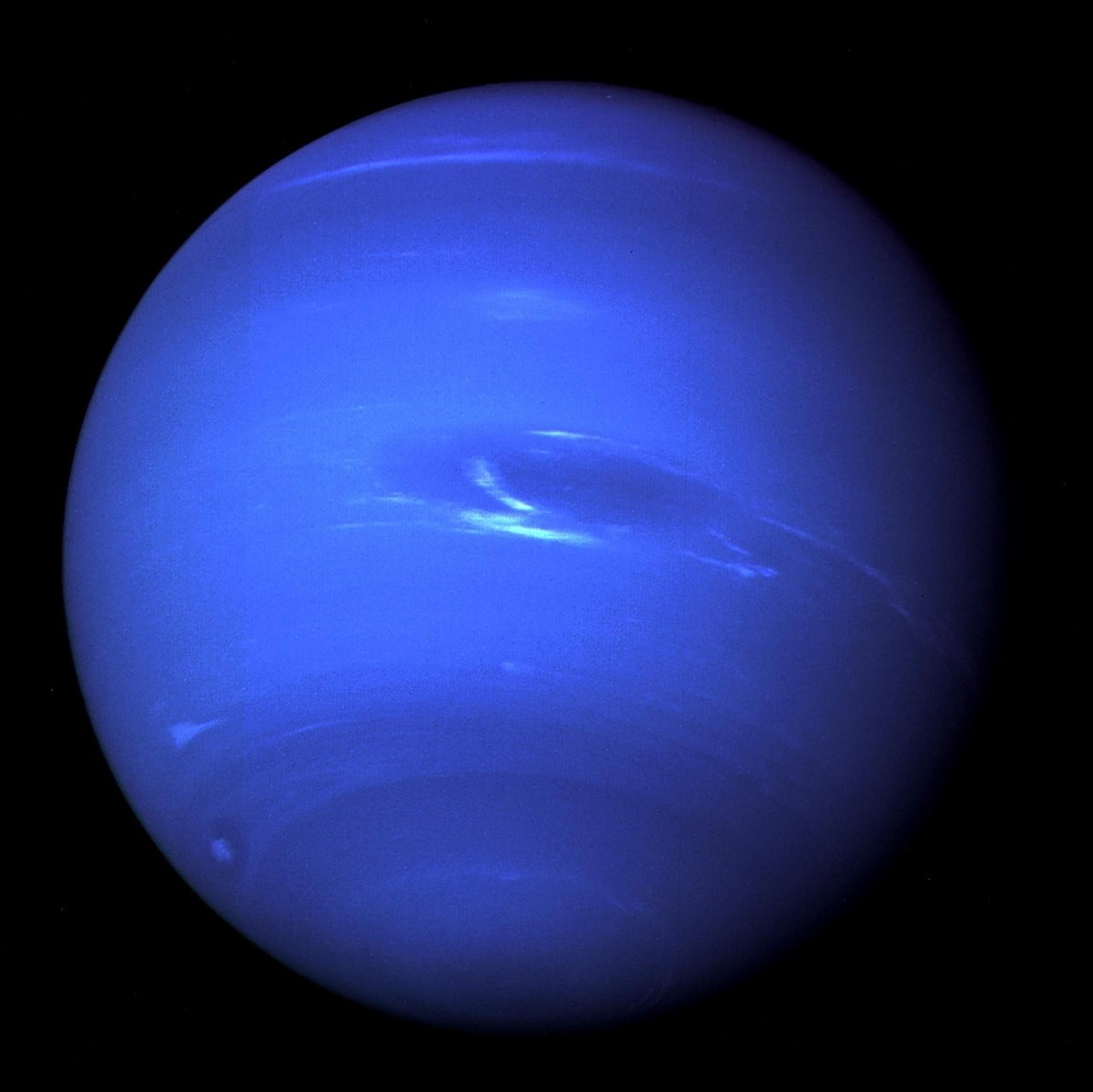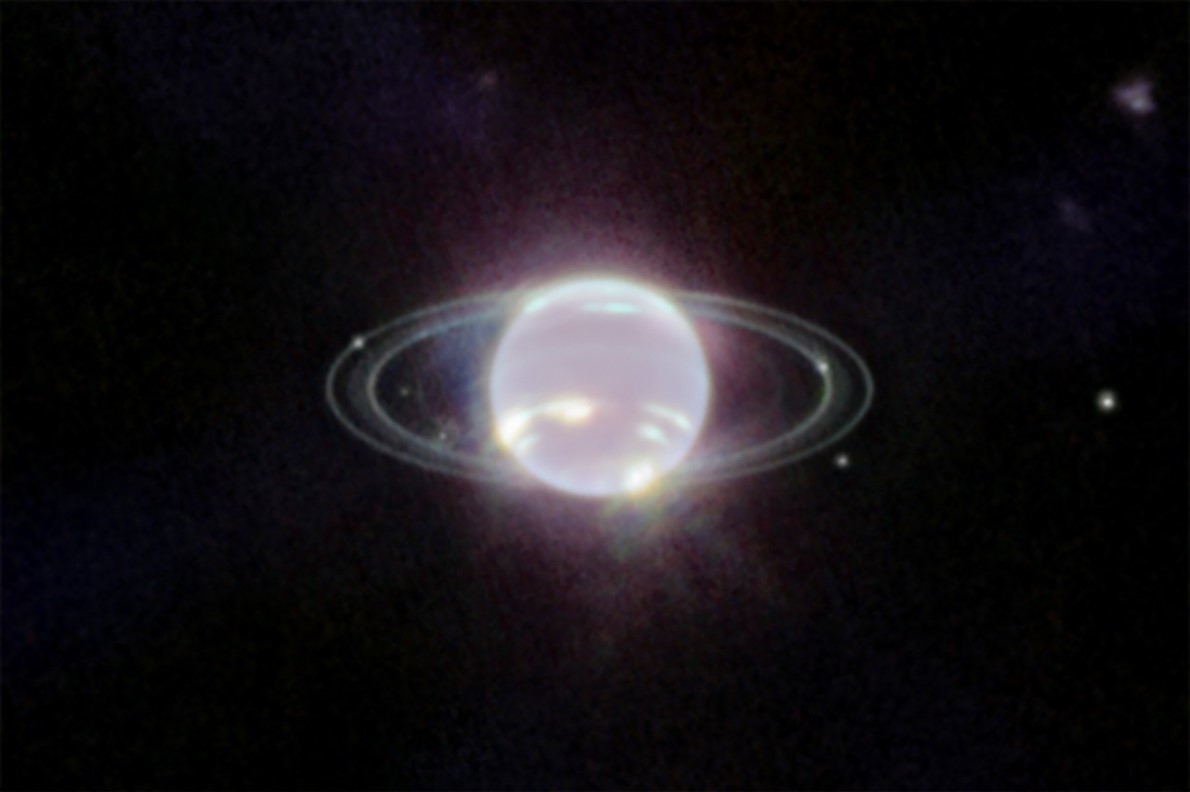No spacecraft has visited Neptune since 1989, when the
NASA probe Voyager 2 flew past on its way out of the solar system. Neptune,
which is four times as wide as Earth, is the most distant planet of our solar
system. Voyager 2’s observations whetted the appetites of astronomers, who were
eager to learn more about the ice giant.
اضافة اعلان
Now we have returned. Sort of.
On Wednesday, the
James Webb Space Telescope cast
its powerful gold-plated eye onto this remote world. The power of this infrared
machine, the largest and most advanced telescope ever sent to space, has
provided some of our best views of Neptune in 30 years.
“I have been waiting so long for these images of
Neptune,” said Heidi Hammel, an interdisciplinary scientist at the Space
Telescope Science Institute in Baltimore, which runs the Webb telescope. “I’m
so happy that it has worked.”
 A photo provided by NASA/JPL shows Neptune and its Great Dark Spot, as captured by the Voyager 2 spacecraft in 1989. New images from the space-based observatory offer a novel view of Neptune and its Rings. (Photo: NASA/JPL/NYTimes)
A photo provided by NASA/JPL shows Neptune and its Great Dark Spot, as captured by the Voyager 2 spacecraft in 1989. New images from the space-based observatory offer a novel view of Neptune and its Rings. (Photo: NASA/JPL/NYTimes)
Ground-based observatories and the
Hubble Space Telescope have taken many images of Neptune in the past three decades. But the
Webb’s views of Neptune, taken in July, provide an unprecedented glimpse at the
planet in infrared light.
It took just a few minutes for the telescope to
image Neptune close up, and an additional 20 to take a wider view, revealing
not just the planet but myriad galaxies behind it stretching into the cosmos.
“It’s aesthetically fascinating to see those distant galaxies and get a sense
for how small the ice giant appears,” said Klaus Pontoppidan, Webb project
scientist at the Space Telescope Science Institute.
Most prominent in the telescope’s view are Neptune’s
rings, seen encircling the planet at a slight tilt given its orientation to
Earth. The Webb telescope will allow astronomers to measure the reflectivity of
the rings, offering an unmatched insight into this remote spectacle. New images
could reveal the size and composition of these thin bands, which are probably
made of ice and other debris.
“The ring system was absolutely mind-boggling to
me,” Hammel said. “I have not seen it in that level of detail since the Voyager
encounter in 1989. It just pops right out.”
Across the planet there are bright spots believed to
be clouds of methane ice, which rise high into the planet’s skies and can
persist for days.
“Nobody really knows what these things are,” said
Patrick Irwin, a planetary physicist at
Oxford University. “They seem to come
and go, a bit like cirrus clouds on Earth.” The Webb telescope’s future
observations could uncover how they form and what they are made of.
Webb images also show seven of Neptune’s 14 moons.
The brightest is Triton, the planet’s largest moon, which scientists suspect
was captured by Neptune’s gravity early in the solar system’s history. In
infrared images, Triton’s frozen nitrogen surface makes it shine like a star,
brighter than Neptune itself, because methane dims the planet in infrared
light. NASA recently declined to send a mission to study Triton, and not much
can be gleaned about it from this image. But future Webb observations should
hint at the composition of Triton’s surface and could show changes indicating
geological activity.
 Neptune with its rings and several of its moons clearly visible, as captured by the James Webb Space Telescope’s Near Infrared Camera. New images from the space-based observatory offer a novel view of Neptune and its Rings. (Photo: NASA, ESA, CSA, STScI/NYTimes)
Neptune with its rings and several of its moons clearly visible, as captured by the James Webb Space Telescope’s Near Infrared Camera. New images from the space-based observatory offer a novel view of Neptune and its Rings. (Photo: NASA, ESA, CSA, STScI/NYTimes)
“Triton is a geologically active world,” Hammel
said. “When Voyager 2 flew by, it saw cryovolcanoes erupting. So there is a
possibility that there are changes in the surface chemistry over time. We will
be looking for that.”
Hammel also thinks a glimpse of Hippocamp, an eighth
Neptunian moon, is pictured just above the planet. “It’s very faint, but it’s
in the right location,” she said.
These images of Neptune are just the latest in
Webb’s tour of the solar system. This week we were treated to the telescope’s
first glimpses of Mars, while over the summer we saw amazing views of Jupiter.
Much more of our solar system will come under the observatory’s roaming eye,
including Saturn, Uranus, and even remote icy objects beyond Neptune — such as
the dwarf planet Pluto.
“It illustrates that we are an all-purpose observatory,”
said Mark McCaughrean, a Webb telescope scientist and a senior scientific
adviser at the European Space Agency. “We can observe very bright things like
Mars and Neptune, but also very faint things. Everybody now sees that it
works.”
Read more Odd and Bizarre
Jordan News




